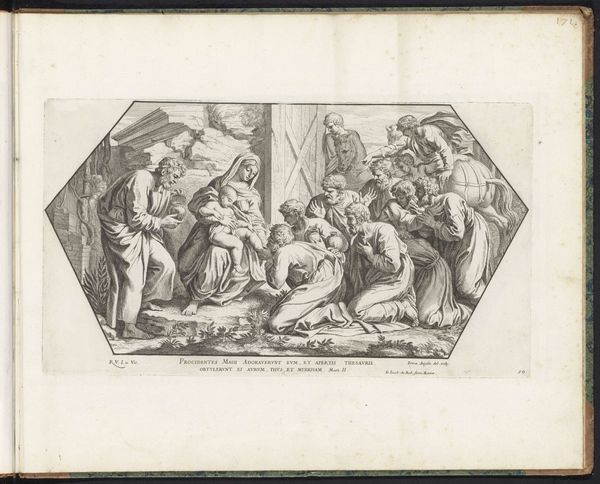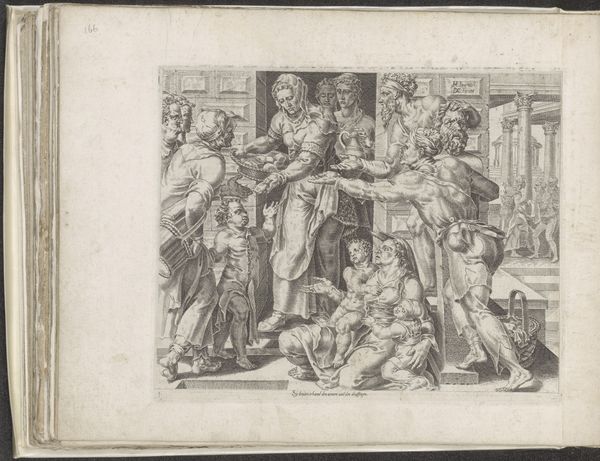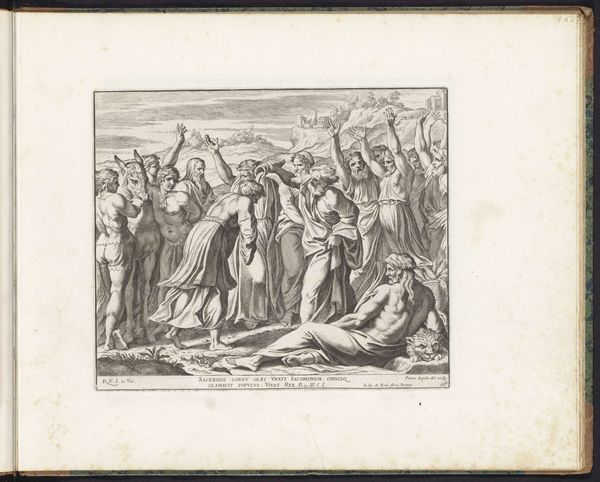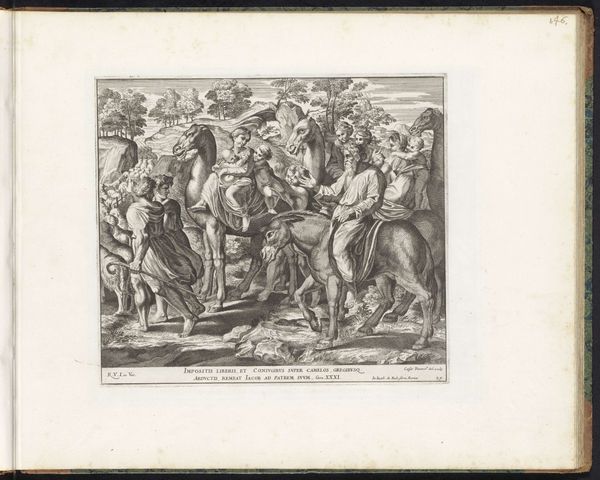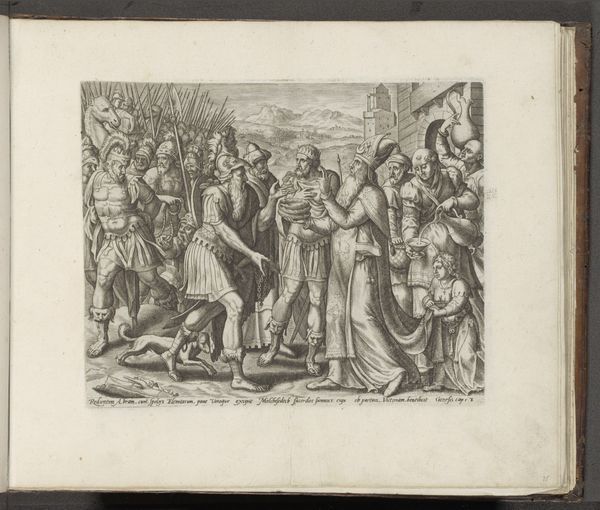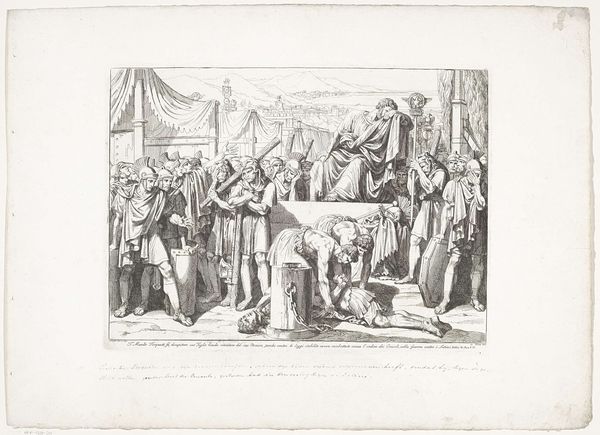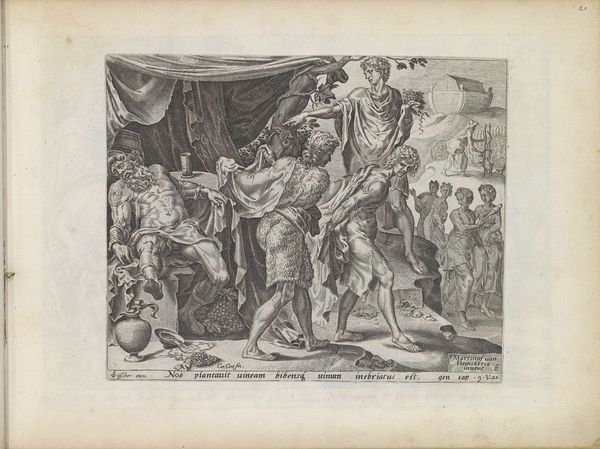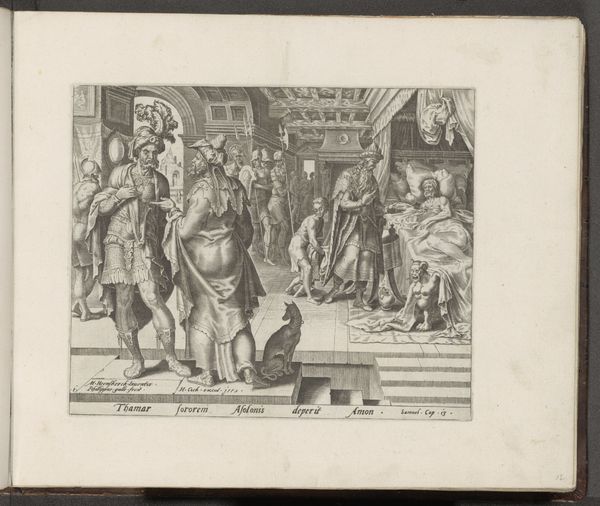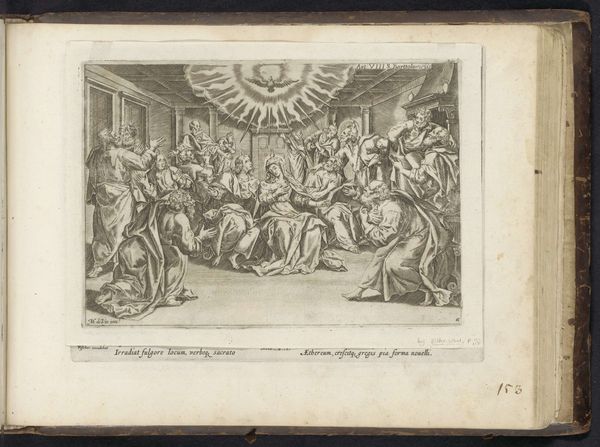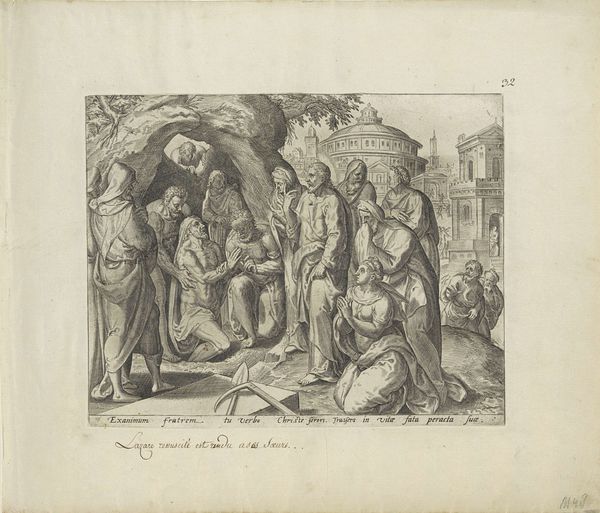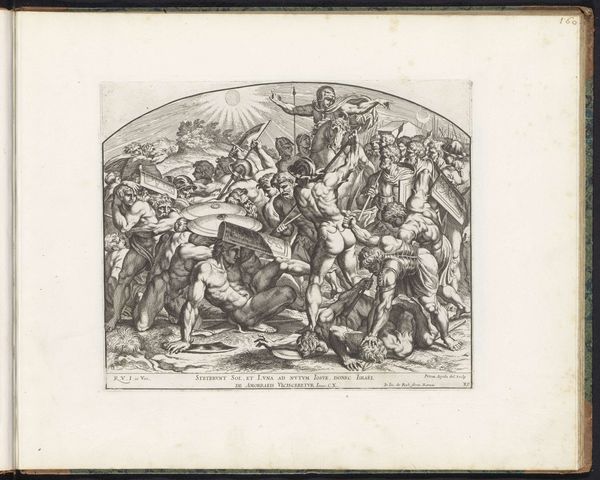
print, engraving
#
narrative-art
#
baroque
# print
#
history-painting
#
engraving
Dimensions: height 246 mm, width 307 mm
Copyright: Rijks Museum: Open Domain
Pietro Aquila made this print, "Eleazar en Jozua verdelen het Beloofde Land tussen de twaalf stammen," sometime between 1650 and 1700. It's an etching, meaning that the image was incised into a metal plate, probably copper, with a sharp tool called a burin. Consider the material properties of the copper: its relative softness allowed Aquila to create these intricate lines. Ink would have been applied to the plate, then wiped away, remaining only in the incised lines. The plate and paper were then run through a press under high pressure, transferring the image. This printmaking process, while requiring skill and precision, allowed for multiple impressions to be made, democratizing access to imagery. It's a stark contrast to unique works like paintings or sculptures. The linear quality of the etching lends itself well to depicting complex scenes with many figures, as seen here. The act of printing, a reproducible medium, places this work squarely within a context of distribution and consumption. Understanding its making helps us appreciate its role in disseminating religious narratives during that time.
Comments
No comments
Be the first to comment and join the conversation on the ultimate creative platform.


